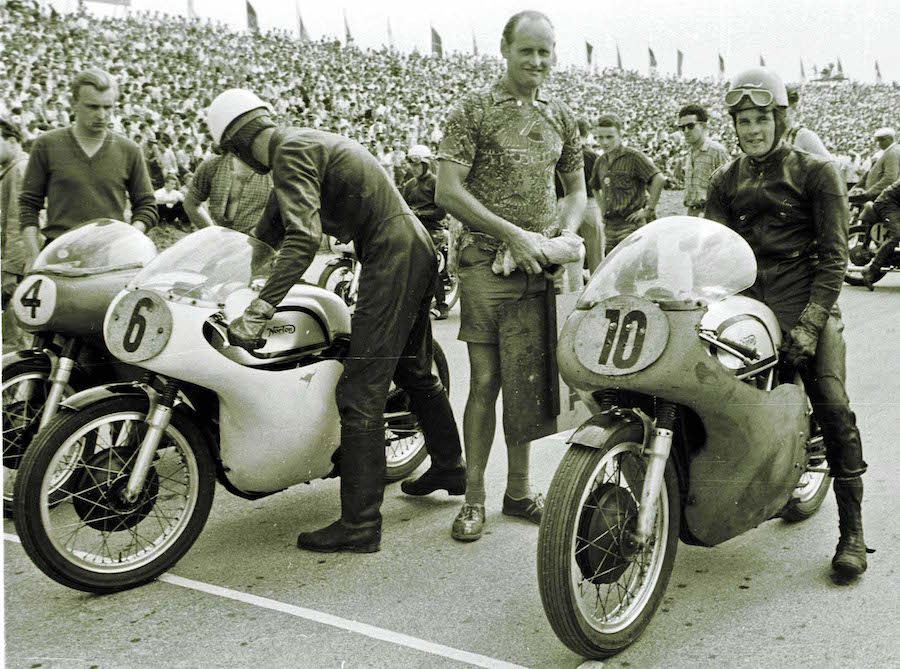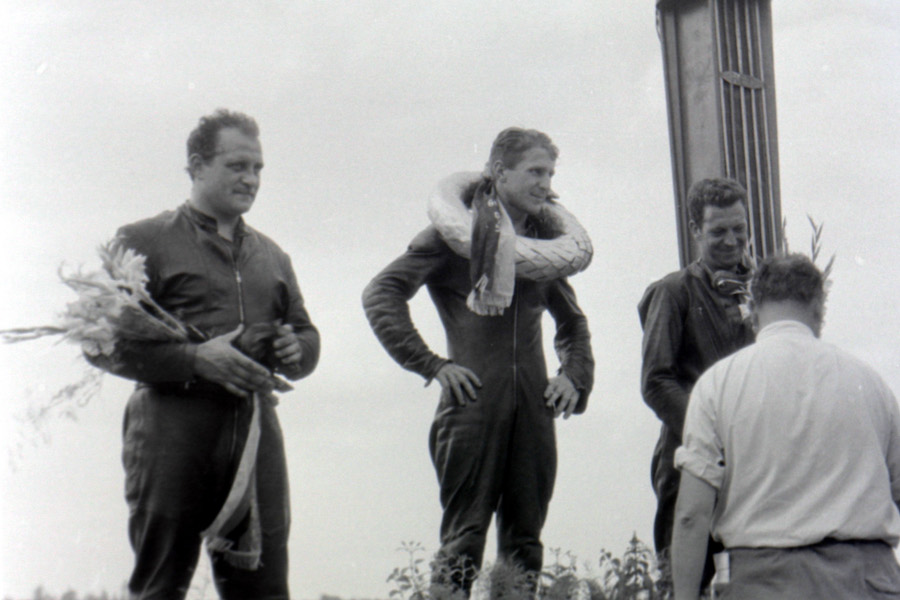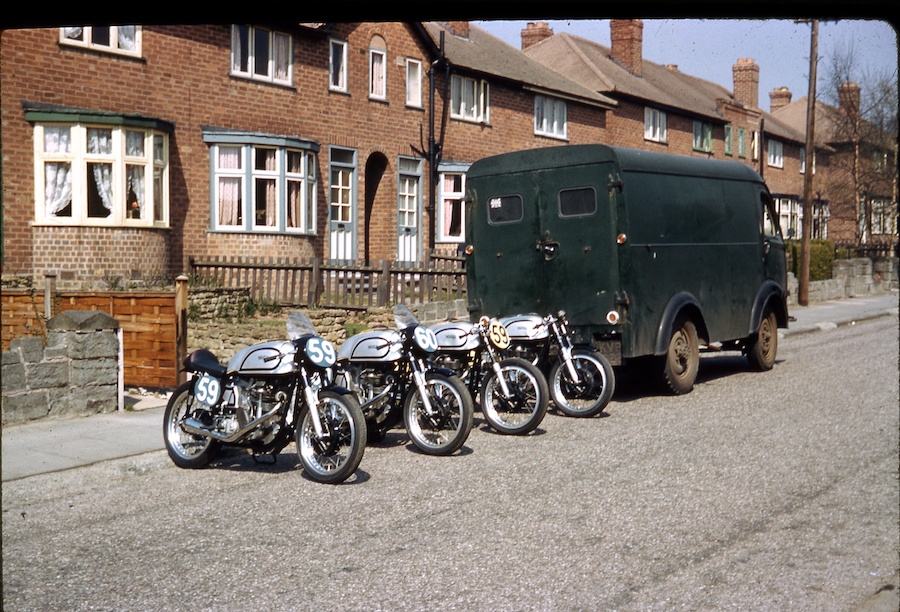If your image of a motorcycle racer is based on the likes of Hailwood, Rossi, Sheene or Schwantz, you’d rate Bob West an unlikely contender.
But at age 32 in 1960-61, this lanky, carefully spoken railways fitter from rural Victoria finished on the podium at iconic venues in Europe and then Australia. We’re talking Opatija, Sachsenring, Schleiz, Phillip Island and Bathurst, with state title victories at Ballarat Airport and Longford.
The opposition? In East Germany, the likes of future six-times world champion Jim Redman and top New Zealander John Hempleman. At home, experienced internationals Jack Ahearn, Eric Hinton and Tom Phillis, top locals Ken Rumble and Ray Blackett, and rising star Kel Carruthers.
At the 1960 Belgian GP, West lost time with a pit stop to check his Norton 500 engine and briefly latched onto the tail of top private entrants Bob Brown and John Hartle through one of the fastest corners on the planet. He described this to the author in 2006.
“The ‘Cocoa Bends’ was really three apexes in one big bend. The bike felt like it was sliding the whole way around. It was a revelation to be behind them and see how fast they went. The bike felt light in the steering, sliding with them. I realised then how hard they rode at front.”
West spent one season on the Continental Circus, travelling with fellow Victorian Jack Findlay, helper Kevin King and four Manx Nortons. Bob had gone to England not planning to race, but he had packed his leathers. He and King had a chance meeting with Findlay at a race in The Netherlands and hatched a plan to go racing together.
“We worked a lot of overtime in Birmingham to buy the bikes, me as a turner and Jack building cars at the Morris factory. We each bought new 350s and second-hand 500s. Mine came from a motorcycle dealer in South Wales who thought he could ride it on the road, until he realised the windy local roads didn’t suit a close-ratio gearbox.
“The first thing we did when we had all the bikes together was line them up behind the van, with the new 350s in front, and take photos.
“I doubt I could have been able to make it without Jack. He helped me get started, organised letterhead, and drafted and typed my start money letters. His training as a bank accountant meant he could type, and he had two season’s experience on how to prepare things.”
West was concerned about having to ride a long public road circuit every week, but discovered he had a knack for learning tracks. “I have a photographic memory type of mind,” he said.
At Opatija, Bob had chance to win the Adriatic 350 GP. “I took lap record and was leading, but another guy (Germany’s Hans Pesl) had a quicker Norton, so I sat in the slipstream and waited. I figured I wouldn’t brake until he did. I got into the last corner in front and then missed a gear, so he got past and so did Jack. I finished third, three or four seconds behind. It didn’t seem like much then, but in modern times it did.”
Later the same day West was second in the 500 GP. However, his best result given the quality of the field was third in the 1960 East German GP, one year before it became a world championship round. The podium photo shows West looking far happier than winner Hempleman and runner-up France’s Jacques Insermini.
“Sachsenring to me was just like Mount Panorama, Bathurst – a big public-road circuit – and my 500 went pretty well at that meeting,” he said.
West’s international career ended with a high-speed crash at the Ulster GP and a broken scaphoid. But the experience of racing week-in week-out in Europe paid dividends in his swansong domestic season.
“It made me a lot sharper. You feel you’re getting better when you’re over there and that stays with you. My first race back, after five weeks with bandaged wrist and a month on the boat, was on my 350 Norton, still on petrol … I felt confident and calm, confident in myself. A couple of times I’d sit behind the top guys and know that I could beat them. I was never a Desperate Dan. I was smoother after I came back and could do the same things with taking too many risks.
“I went to Bathurst in 1961 with Jimmy Guilfoyle’s 500 Manx, tuned for alcohol and carrying full streamlining. I rode around behind one of the best locals and I thought he would fall off.”
Bob West didn’t always recall the details of his races, saying he just loved riding his bikes. He died in Melbourne in September 2009, aged 81.



DARRYL FLACK











